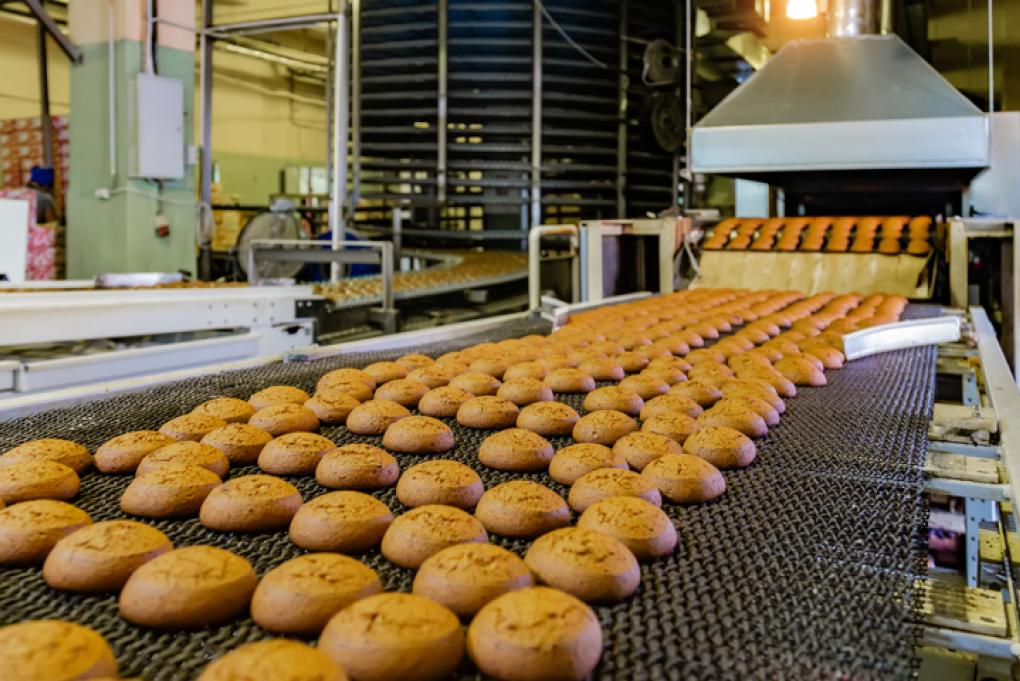
The complexity of Spanish agrifood exports
Spain’s agrifood sector is typically focused on exports: The range of agrifood products exported by Spain is getting wider and covering more destinations. However, another dimension should also be taken into account: export complexity, a concept that measures the knowledge intensity required to produce exported goods. Because not only the volume of exports is important but also what is exported.
Agrifood exports are undeniably a fundamental pillar of Spain’s exports. Growth over the past decade has been 5.5% year-on-year on average (exceeding the 4.2% growth of all exported goods), totalling EUR 47.6 billion in 2018 and accounting for 16.7% of all exported goods (compared with 14.7% in 2008)1. The relative weight of agrifood products is high for a developed economy that’s as diversified as Spain and reflects the significant advantage enjoyed by the country to produce this kind of goods. Spain is therefore the fourth biggest exporter of agrifood products in the EU and the eighth worldwide, with a global market share of 3.3% (much higher than its 1.9% share of all exported goods).
- 1In this article, products are defined according to the TARIC nomenclature at the 4-digit level of detail, agrifood products being those classified between TARIC 0101 and 2403.
Spain ranks eighth worldwide among countries exporting agrifood products
Spain's exports have grown by 5.5% year-on-year in the past decade and totalled EUR 47.6 billion in 2018
Top 10 agrifood exporters
Billion dollars

The rise in agrifood exports in the past few years has been accompanied by diversification, both in terms of the country of destination and also the range of products exported. This last fact is indicated by the Herfindahl index, which measures the degree of concentration of the agrifood products exported2: the lower the index (which, in the case of Spain, went from 3,001 to 2,696 between 2008 and 2018), the more diversified the range of exports. For instance, the relative weight of citrus fruits, olive oil and wine in Spanish exports has fallen in favour of a much broader assortment of products. On the other hand, the industry has also managed to diversify the countries it exports to. Although the euro area is still the major market for agrifood exports, its share has gradually decreased (58.3% in 2018 compared with 66.5% de 2008) in favour of more distant markets such as Asia, Africa and America.
- 2The Herfindahl index measures the degree of concentration based on the relative weight associated with each agrifood product exported. Specifically, it is the sum of the square of the share of each product out of the total agrifood exports, resulting in a figure between 0 and 10,000, where 0 indicates maximum diversification and 10,000 implies total concentration.
Internationalisation: diversifying products and destinations
Spain’s agrifood sector has seen strong growth in the past decade by focusing on diversifying products and destinations and also thanks to a strategy aimed at internationalisation
Like any other industry exposed to international markets, its future depends on its ability to continue being competitive. The way to achieve this involves the industry promoting a strategy that does not merely focus on increasing exports but also takes the type of product sold abroad into account. In this respect, one particularly useful concept to determine the industry’s competitive capacity is the complexity of its exports. The theory of economic complexity, developed by various academics from the prestigious universities of Harvard and MIT3, claims that a country’s production and knowledge capacity are reflected in the products it can produce and export competitively. Consequently, a country (or region) is more complex when it exports products that require greater knowledge intensity and which few economies can produce. Similarly, the Product Complexity Index (PCI) measures the relative intensity of the knowledge required to produce a product, taking into account the economic complexity of the countries that export this product. For instance, tomatoes (fresh or chilled) are less complex than canned tomatoes (a PCI of 25.0 and 33.2, respectively, in 2018)4.
De este modo, un país (o región) es más complejo cuando exporta productos que requieren una mayor intensidad de conocimiento y que pocas economías pueden producir. De forma similar, la complejidad de un producto (Product Complexity Index o PCI, en su voz inglesa) mide la intensidad relativa de conocimiento necesario para producirlo considerando la complejidad económica de los países exportadores de dicho producto. Por poner un ejemplo, los tomates (frescos o refrigerados) son menos complejos que la conserva de tomates (PCI de 25,0 y de 33,2, respectivamente, en 2018)4.
- 4Nótese que se definen los productos a partir del código TARIC a 4 dígitos, lo que desafortunadamente no permite distinguir la calidad de las distintas variedades de un mismo producto.
A better position to compete
Export complexity measures the intensity of knowledge required to produce exported goods. A more complex economy is in a better position to compete in the global market
Taking into account the product complexity index (PCI), weighted for the share of exports of this product in the total agrifood exports, we can calculate the agrifood exports complexity index (AECI). For 2018, the AECI was 36.9, considerably lower than the complexity index for Spanish exports as a whole (49.7)5. This is not surprising as, in general, agrifood products have a relatively low complexity in comparison with other manufactured products such as high precision machinery and chemicals, whose production is more knowledge-intensive. The following chart shows that this gap has continued over time.
- 5The Spanish economy comes 28th in the global economic complexity ranking. For an analysis of the export complexity of Spain’s economy in general, see the article «From lettuce to cars: an analysis of the complexity of Spanish exports» in the Monthly Report for October 2018. https://www. caixabankresearch.com/ en/lettuce-cars-analysiscomplexity- spanishexports
Spain: trend in the complexity of total exports and agrifood exports
Export complexity index

If we look at the trend in the AECI over the past decade, we can see it has fallen (from 39.3 in 2008 to 36.9 in 2018), suggesting a moderate decrease in the complexity of agrifood exports. However, before reaching any hasty conclusions, it is important to understand which factors are causing this phenomenon. Complexity is a relative concept; i.e. a product’s complexity depends on how many countries can produce it so that, if increasingly more countries can export what one country exports, it loses complexity. And this is actually what has happened in the case of agrifood products6. In fact, shift in agrifood exports towards more complex products has prevented an even greater reduction in the AECI. In effect, the relative weight of highly complex agrifood products has increased (8.8% in 2018 compared with 7.2% in 2008)7. If we look at the products in detail, pork especially stands out (TARIC 0203) because of its greater relative complexity and its increasing share of total exports, followed by meat & edible meat offal (TARIC 0210) and mushrooms and truffles (TARIC 2003) and pig fat (TARIC 1501). However, low complexity products still predominate in agrifood exports (72.2% of the total in 2018).
- 6If the value and PCI of each product had remained constant since 2008, the AECI would have increased to 39.7 in 2018.
- 7We classify agrifood products into three groups according to the value of its PCI (high, medium and low). Groups are defined based on percentile 33 (41.9) and percentile 66 (56.0) of the distribution and PCI.
Exports of agrifood products and their complexity
% of total

What is the complexity of the products exported by the different autonomous communities?
The map and tables on the next page show the complexity index for the agrifood exports (AECI) for each autonomous community (AC)8.
One initial observation is that the ACs that export more complex agrifood products are not those that export the most. According to the 2018 data, Asturias and Aragon are the communities with the highest AECI (47.9 and 46.6, respectively) in spite of accounting, jointly, for just 4% of total agrifood exports. In the case of Asturias, its high complexity is due to the predominance of dairy products (butter, milk and cream, cheese and curd) and eggs, products with a high PCI. In Aragon this is due to the importance of pork, which makes up 37% of the region’s total exports and, as we have already mentioned, also has a very high PCI (60.1). On the other hand, Murcia, Andalusia and the Valencian Community contribute, together, almost half the agrifood exports but have a relatively low AECI (34.2, 32.4 and 32.1, respectively) due to the preponderance of fruit and vegetables, whose PCI is low. Galicia, however, has the lowest AECI of all (31.0) due to its export specialisation in fishing products, which tend to be associated with a low complexity.
- 8The AECI of an autonomous community is calculated as the PCI of each product weighted according to the percentage of the total exports of this product out of all the AC’s agrifood products.
Distant markets
The products exported to the euro area, the Spanish agrifood sector’s main trading partner, are less complex than those exported to more distant markets
The autonomous communities do not only differ in terms of the range of agrifood products they export but also in their destination markets. For example, Asturias, Galicia and Cantabria send around 75% of their exports to the euro area, while the Canary Islands barely send 25% to this market (due to the importance of Africa).
The complexity of agrifood exports in the different autonomous communities

The destination market is important because a positive relationship can be seen between the complexity of the agrifood products exported and the distance to their final destination. The euro area receives less complex products while exports to Oceania and Asia tend to be more complex. For instance, the exports from Aragon, Catalonia and Castile & Leon to Oceania and Asia are particularly significant (exports of pork), as well as the exports by Asturias to Africa (dairy products and infant preparations).
Spain exports more complex agrifood products to more distant locations
Agrifood export complexity index by destination

In short, we have seen that there are significant differences in the type of agrifood product exported by the different autonomous communities. In many cases, these differences are the result of each region specialising in producing goods in which they have a clear competitive advantage due to their geographic location or climate, factors that should certainly be maximised. Although they should also look into the future. In this respect, it is vital to design a strategy that consolidates the agrifood sector’s competitiveness in an increasingly globalised world. This means that other types of factors should also be taken into account, such as the complexity of the products exported. Ultimately, several studies have shown that a country’s economic complexity is an important variable in predicting its economic growth over the medium term. Neither are the benefits of producing more complex goods limited to an industry’s competitiveness; they generate positive spillovers for the domestic labour market9 and, in general, improve the economy’s productivity
- 9Specifically, more complex business sectors have better labour conditions. See Canals, C and Montoriol, J. (2018). «La complejidad de las exportaciones y la calidad del empleo». Papeles de Economía Española, (158), 116.



